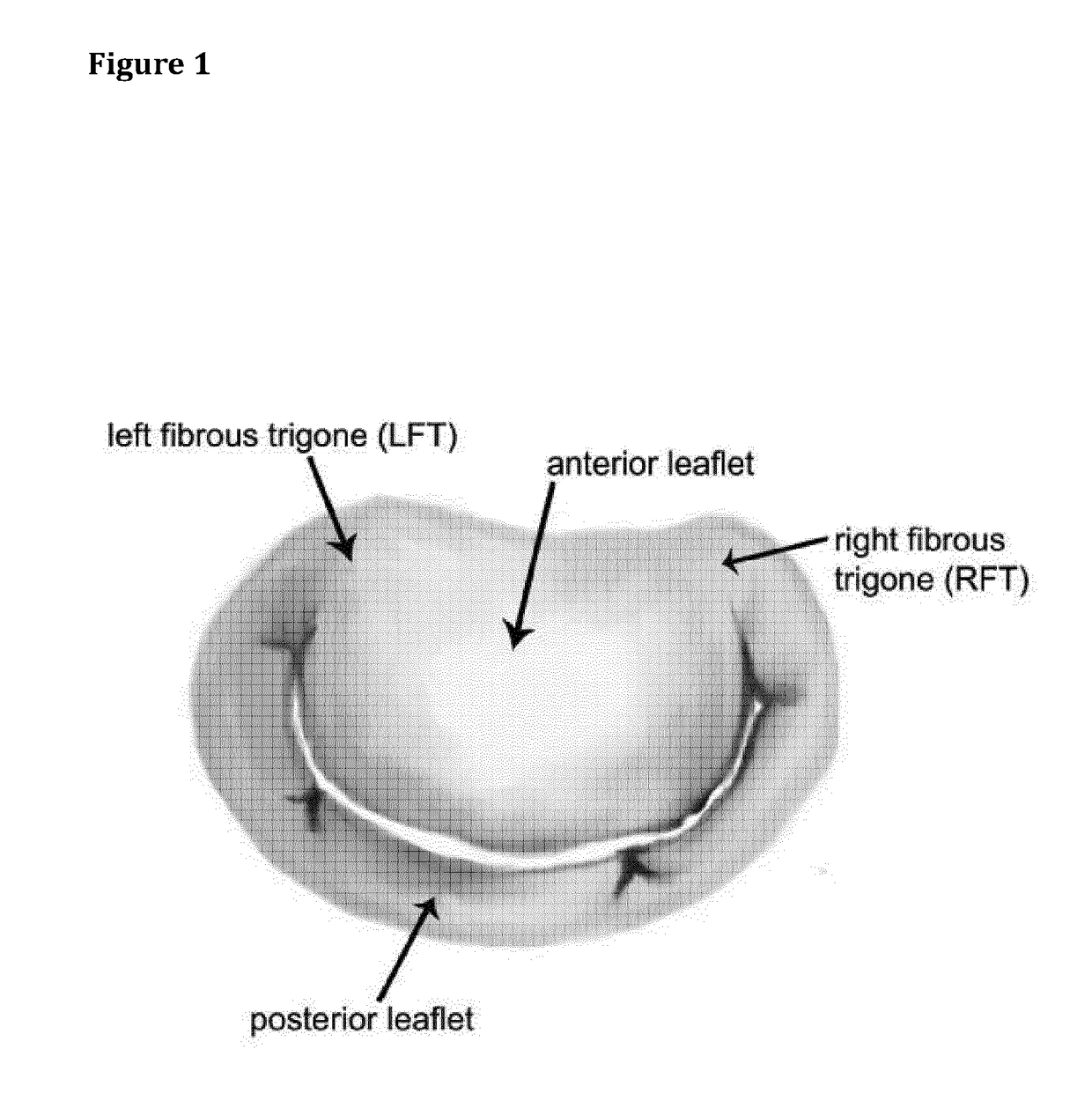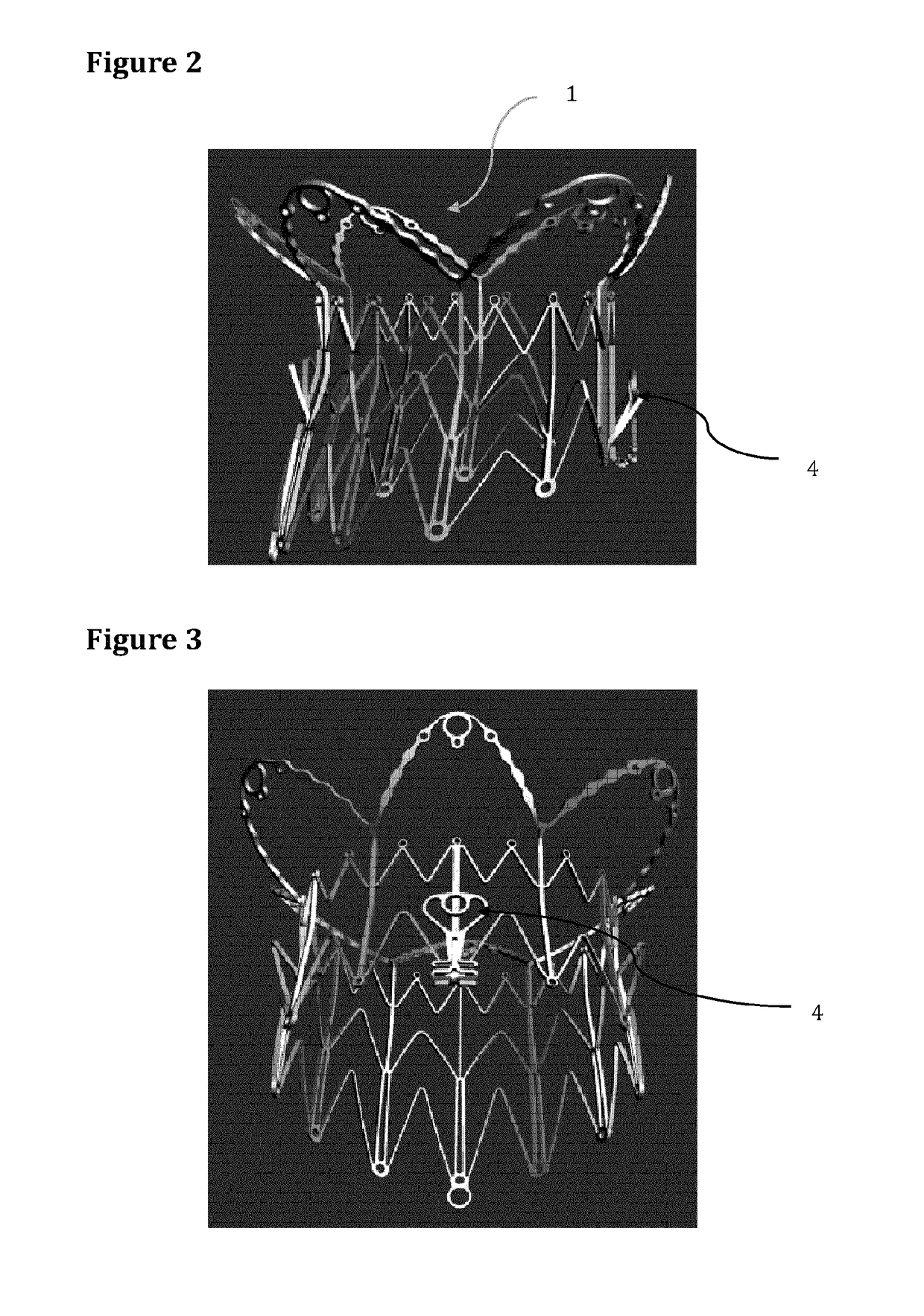Atrio-Ventricular Valve Stent with Native Leaflet Grasping and Holding Mechanism
a native leaflet and stent technology, applied in the field of heart valve stents, can solve the problems of high morbidity and mortality, high risk of complication in high risk of surgery in patients with damaged cardiac function, so as to prevent any traumatic damage of leaflet tissue, increase the anchoring of the stent, and prevent damage to cardiac tissu
- Summary
- Abstract
- Description
- Claims
- Application Information
AI Technical Summary
Benefits of technology
Problems solved by technology
Method used
Image
Examples
Embodiment Construction
[0039]The invention is discussed below in a more detailed way with examples illustrated by the following figures:
[0040]FIG. 1 represents a native mitral valve.
[0041]FIG. 2 shows an example of a mitral valve stent according to the invention.
[0042]FIG. 3 better shows the anterior side of the stent of FIG. 2.
[0043]FIG. 4 shows a portion of a stent according to the invention, in a flat configuration.
[0044]FIG. 5 represents native leaflet retained by a stent according to the invention.
[0045]FIG. 6 represents the leaflet of FIG. 5 in a locked position.
[0046]FIG. 7 shows different orientations of an engagement member according to the invention.
[0047]FIG. 8 illustrates another example showing the fixation of an engagement member to the stent body.
[0048]FIG. 9 shows a stent according to the invention in a collapsed state with only one anterior engagement member.
[0049]FIG. 10 shows a stent according to the invention in a collapsed state with both one anterior and one posterior engagement memb...
PUM
 Login to View More
Login to View More Abstract
Description
Claims
Application Information
 Login to View More
Login to View More - R&D
- Intellectual Property
- Life Sciences
- Materials
- Tech Scout
- Unparalleled Data Quality
- Higher Quality Content
- 60% Fewer Hallucinations
Browse by: Latest US Patents, China's latest patents, Technical Efficacy Thesaurus, Application Domain, Technology Topic, Popular Technical Reports.
© 2025 PatSnap. All rights reserved.Legal|Privacy policy|Modern Slavery Act Transparency Statement|Sitemap|About US| Contact US: help@patsnap.com



